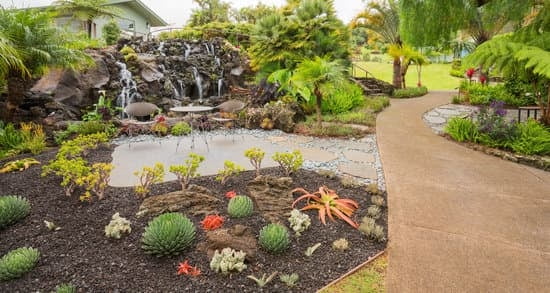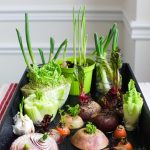Are you looking for some fresh vegetables for gardens ideas to spruce up your backyard? Growing your own vegetables at home has numerous benefits, including access to fresh, organic produce, improved mental and physical well-being, and the satisfaction of watching your garden flourish. In this article, we will explore the various benefits of growing vegetables in your garden and provide tips and ideas for planning, planting, and maintaining a successful vegetable garden.
One of the key benefits of having a vegetable garden is the convenience of having access to fresh produce right in your backyard. By growing your own vegetables, you can ensure that they are free from harmful chemicals and pesticides, leading to healthier and more nutritious options for you and your family. Additionally, gardening has been proven to reduce stress levels and improve overall mental well-being, making it a therapeutic and fulfilling hobby.
In the following sections, we will delve into the different aspects of vegetable gardening, including choosing the right location, soil, layout, seasonal planting guide, creative design ideas for incorporating vegetables into your landscape, organic gardening tips for growing healthy produce without harmful chemicals, troubleshooting common pests and diseases that may affect your plants, and tips for harvesting and storing your bountiful harvest.
Whether you’re a beginner or an experienced gardener looking for new inspiration, this article will provide you with valuable information to help you make the most of your vegetable garden.
So let’s get started on this exciting journey of exploring the world of growing delicious and nutritious vegetables in your own backyard.
Planning Your Vegetable Garden
When planning your vegetable garden, one of the first things to consider is the location. Choose a spot that receives ample sunlight, ideally at least 6-8 hours per day, as most vegetables thrive in sunny conditions. It’s also important to ensure that the location has good drainage to prevent waterlogging, which can be detrimental to plant health. Additionally, consider the proximity to a water source for easy irrigation.
The next step is preparing the soil for your vegetable garden. Conduct a soil test to determine its pH and nutrient levels, then amend the soil as needed to create a fertile and balanced growing environment for your vegetables. Adding organic matter such as compost or well-rotted manure can improve soil structure and fertility.
Another important aspect of planning your vegetable garden is the layout. Consider factors such as companion planting, which involves placing compatible plant species together to maximize growth and deter pests. You may also want to consider raised bed or container gardening if you have limited space or poor soil quality in your chosen location.
In summary, when planning your vegetable garden, carefully select a sunny location with good drainage, prepare the soil by amending it with organic matter, and consider layout options such as companion planting or raised beds. By taking these factors into account, you can set yourself up for success in growing an abundant and thriving vegetable garden.
Best Vegetables for Beginners
When starting a vegetable garden, choosing the right vegetables to grow is crucial, especially for beginners with limited experience. Selecting easy-to-grow options will help build confidence and ensure a successful harvest. Here are some great vegetables for gardens ideas that are perfect for novice gardeners.
Tomatoes
Tomatoes are one of the most popular vegetables for home gardens. They thrive in well-drained soil and require plenty of sunlight. With a variety of sizes and colors to choose from, tomatoes can be grown in containers or directly in the ground, making them an ideal choice for beginners.
Radishes
Radishes are fast-growing and can be ready to harvest in as little as three weeks. These hardy vegetables can tolerate less-than-ideal soil conditions and don’t require extensive maintenance, making them an excellent option for novice gardeners.
Green Beans
Green beans are another easy-to-grow vegetable that is perfect for beginners. They can thrive in almost any type of soil and provide a bountiful harvest throughout the growing season. With minimal care required, green beans are a great addition to any beginner’s garden.
By including these easy-to-grow vegetables into your garden, you can kickstart your gardening journey with confidence. With proper care and attention, these vegetables will provide you with a rewarding harvest and encourage you to expand your gardening skills in the future.
Seasonal Planting Guide
When it comes to maximizing your garden’s potential, understanding the best vegetables to plant during each season is key. By planning your vegetable garden with year-round varieties in mind, you can ensure a steady supply of fresh produce throughout the year.
In the spring, consider planting cool-season vegetables such as lettuce, spinach, and peas. These vegetables thrive in cooler temperatures and can be planted as soon as the soil is workable. As the weather warms up, transition to warm-season vegetables like tomatoes, peppers, and cucumbers, which require more sunlight and heat to flourish.
During the fall, focus on planting another round of cool-season vegetables for a second harvest. This can include crops like carrots, beets, and kale. Additionally, some vegetable varieties can withstand the chill of winter and continue to produce well into the cold months. Look for frost-resistant options such as Brussels sprouts, leeks, and certain types of lettuce to keep your garden productive even when temperatures drop.
To maintain a year-round vegetable garden, it’s important to plan your planting schedule carefully based on your local climate and growing conditions. Investing in row covers or other protective measures can also extend the growing season for certain vegetable varieties.
| Vegetable | Best Time to Plant |
|---|---|
| Lettuce | Early spring or late summer for fall crop |
| Tomatoes | After last frost date in spring |
| Kale | Late summer for fall/winter harvest |
Creative Garden Design Ideas
If you want to take your vegetable garden to the next level, consider incorporating vegetables into your landscape in a creative and visually appealing way. There are several ideas for creatively designing your garden that not only make it aesthetically pleasing but also maximize the space and productivity of your vegetable garden.
One popular trend is vertical gardening, which involves using trellises, stakes, or hanging planters to grow climbing vegetables like tomatoes, cucumbers, and peas. This not only saves space but can also create a stunning visual effect in your garden.
Another idea is to interplant vegetables with flowers and herbs. This not only adds color and beauty to your garden but can also help repel pests and attract beneficial insects. For example, marigolds can deter nematodes, while lavender can attract bees for pollination. You can also create raised beds or container gardens with different shapes and sizes to add visual interest to your vegetable garden.
Additionally, consider adding pathways or edging made with decorative materials like gravel, stones, or bricks to define different areas of your vegetable garden. By incorporating these design elements into your landscape, you can create a beautiful and functional garden that not only produces an abundance of vegetables but also enhances the overall look of your outdoor space.
The possibilities are endless when it comes to integrating vegetables into your landscape design, so feel free to get creative and make your garden a true work of art.
Lastly, consider adding some unique features such as sculptures or water features that complement the natural beauty of the plants in your vegetable garden. These elements can add personality and charm to the space while providing a relaxing atmosphere for you to enjoy the fruits of your labor. By infusing creativity into the design of your vegetable garden, you can turn it into a truly enchanting and productive space that brings joy and satisfaction throughout the growing season.
Organic Gardening Tips
Growing vegetables in your garden is not only a rewarding experience, but it also allows you to have full control over the growing process, ensuring that your produce is free from harmful chemicals. Organic gardening is a method of growing fruits and vegetables using natural and sustainable practices, without the use of synthetic pesticides or fertilizers.
By following organic gardening tips, you can grow healthy and nutrient-rich vegetables that are not only good for your health but also for the environment.
One of the key principles of organic gardening is building healthy soil. Healthy soil is the foundation for a successful vegetable garden. It’s important to maintain soil fertility by adding organic matter such as compost, manure, or cover crops. This helps promote microbial activity and provides essential nutrients to your plants. Additionally, using natural mulch like straw or wood chips can help retain moisture, suppress weeds, and improve soil structure.
In addition to promoting healthy soil, organic gardening also prioritizes biodiversity and natural pest control methods. Planting a diverse range of vegetables and flowers can attract beneficial insects such as ladybugs and lacewings that prey on common garden pests like aphids or caterpillars.
By avoiding chemical pesticides, you allow these natural predators to thrive and keep harmful insect populations in check. Introducing companion plants like marigolds or basil can also help deter pests while enhancing the overall health of your vegetable garden.
| Organic Gardening Tips | Data |
|---|---|
| Healthy Soil | Maintain soil fertility with organic matter such as compost or manure. |
| Biodiversity | Plant a diverse range of vegetables and flowers to attract beneficial insects. |
| Natural Pest Control | Avoid chemical pesticides and introduce companion plants to deter pests. |
Troubleshooting Common Garden Pests and Diseases
When it comes to growing your own vegetables in your garden, one of the biggest challenges can be dealing with common garden pests and diseases. These invaders can wreak havoc on your carefully cultivated plants, but with the right knowledge and strategies, you can protect your vegetables and ensure a bountiful harvest.
Identifying Common Garden Pests
One of the first steps in protecting your vegetables from harmful invaders is learning to identify common garden pests. These can include aphids, caterpillars, slugs, snails, and more. By regularly inspecting your plants for signs of damage or the presence of these pests, you can take action early and prevent infestations from getting out of hand.
Natural Pest Control Methods
Instead of reaching for chemical pesticides that can be harmful to the environment and beneficial insects, consider using natural pest control methods to protect your vegetables. For example, you can attract natural predators like ladybugs and lacewings by planting flowers such as marigolds and calendula around your vegetable garden. Additionally, using physical barriers like row covers or planting certain companion plants can also help deter pests from damaging your crops.
Preventing and Managing Common Garden Diseases
In addition to pests, gardeners also need to be mindful of common diseases that can affect their vegetable plants. Fungal infections like powdery mildew or blight, as well as bacterial diseases, can cause significant damage if left unchecked.
Proper watering techniques, good air circulation, and crop rotation are essential for preventing these diseases from taking hold in your garden. In cases where diseases do occur, prompt action such as removing affected plants or treating with organic fungicides may be necessary to prevent the spread to healthy crops.
By being proactive in identifying potential threats to your vegetable garden and implementing natural pest control methods and disease prevention strategies, you can protect your vegetables from harm while promoting a healthy growing environment in which they can thrive.
Harvesting and Storage
Once you have successfully grown a bountiful harvest of vegetables in your garden, it’s essential to know how to properly harvest and store them to enjoy the fruits of your labor all year round. Here are some tips and techniques for harvesting and storing your vegetables:
- Harvest at the Right Time: It’s important to harvest your vegetables at the right time to ensure peak flavor and freshness. Be sure to research each vegetable variety to determine the best time for harvesting.
- Proper Storage Conditions: Once harvested, different vegetables require different storage conditions. For example, root vegetables such as carrots and beets can be stored in a cool, dark place with high humidity, while tomatoes and peppers are best stored at room temperature away from direct sunlight.
- Canning and Preserving: To extend the shelf life of your vegetables, consider canning or preserving them. This can be done through various methods such as pickling, freezing, or drying. Canning equipment and instructions are readily available for purchase online or at local stores.
By following these tips for harvesting and storage, you can enjoy a supply of fresh homegrown vegetables throughout the year. Whether you’re using them in meals straight from the garden or incorporating them into homemade preserves, properly storing your harvest will allow you to savor the flavors of your garden even when the growing season has come to an end.
Conclusion
In conclusion, growing your own vegetables in your garden is a rewarding and fulfilling experience that offers a wide range of benefits. Not only does it provide you with fresh and nutritious produce, but it also allows you to connect with nature, reduce your environmental impact, and save money on groceries. By embracing the joy of growing your own vegetables, you can take pride in knowing exactly where your food comes from and how it was produced.
When planning and designing your vegetable garden, it’s important to consider the specific needs of each plant, such as sunlight, water, and spacing requirements. By carefully selecting the right location, soil, layout, and seasonal varieties for your garden, you can maximize its potential and ensure a healthy and bountiful harvest year-round. Whether you’re a beginner or an experienced gardener, there are plenty of easy-to-grow vegetable options and creative design ideas to suit your preferences.
Furthermore, by adopting organic gardening practices and using natural methods to protect your vegetables from pests and diseases, you can ensure that they remain healthy and nutrient-rich without the need for harmful chemicals. Finally, by following proper harvesting and storage techniques, you can enjoy the fruits of your labor all year round while reducing waste.
In essence, by incorporating these vegetables for gardens ideas into your gardening routine, you can create a sustainable and enjoyable source of fresh produce right in your own backyard.
Frequently Asked Questions
What Vegetables Should Every Garden Have?
Every garden should have a variety of vegetables to ensure a balanced and healthy harvest. This may include staples like tomatoes, lettuce, carrots, and peppers. Root vegetables like radishes and onions also make great additions.
What Vegetables Go Well Together in a Garden?
When planning a garden, it’s important to consider which vegetables grow well together. For example, planting corn with beans and squash – also known as the “Three Sisters” method – can benefit all three crops. Other combinations like tomatoes with basil or carrots with onions are also popular pairings.
What Are the Easiest Vegetables to Grow in the Garden?
For beginner gardeners or those looking for low-maintenance options, there are several easy-to-grow vegetables to consider. Lettuce, zucchini, radishes, and green beans are all relatively simple to cultivate. Herbs like basil and mint are also great choices for novice gardeners seeking quick results.

Welcome to my gardening blog! I am passionate about plants and enjoy sharing my knowledge and experiences with others. In this blog, I will write about everything related to gardening, from tips on how to get started to updates on my own garden projects.





